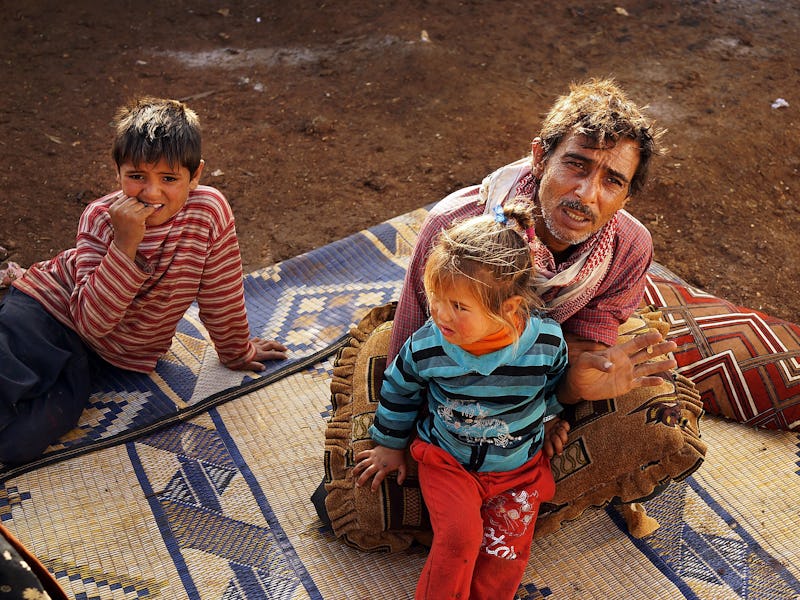ISIS-Occupied Syria Is Being Attacked by a 'Flesh-Eating' Leishmaniasis
Cases of cutaneous leishmaniasis are increasing in refugee communities in Lebanon as well.

The total collapse of the Syrian health infrastructure has led to the spread of diseases, including polio, measles, and, now, cutaneous leishmaniasis. The most common form of leishmaniasis, CL causes skin lesions and ulcers to develop on the body, very often leaving scars and serious disability to the victim. Also known as the “Aleppo Boil”, the disease is reportedly spreading in the rural areas of ISIS-controlled Syria.
“As a result of abominable acts by ISIS that included the killing of innocent people and dumping their corpses in the streets, this is the leading factor behind the rapid spread of leishmaniasis disease,” said Dilqash Isa, head of the Kurdish Red Crescent, to the Kurdish media network Rudaw.
While this appears to be one of this first claims that the spread of CL is directly linked to the dumping of bodies, the plague of the disease on Syria is unfortunately not new. Previous to the civil war in Syria, CL was a documented yet well-controlled disease — since the outbreak of war it has increased tenfold. Syria currently has the highest estimated case counts of CL in the world. The Syrian Ministry of health recored 41,000 cases in the first two quarters of 2013 alone. It is currently unknown how many cases exist in the region.
CL is caused when the Leishmania parasites are transmitted by the bite of infected sandflies. It is known to affect the poorest people on the planet and can be connected to population displacement, a lack of resources, and malnutrition. A lack of sanitary conditions leads to an increase in sand fly breeding and resting sites, which in turn leads to an increase of the disease. Sleeping outside or on the ground exacerbates the risk of infection.
The disease, which is found worldwide, is a treatable and curable infection. But this treatment needs to be both complete and prompt. That’s a real problem in Syria, where, according to the World Health Organization, at least 160 doctors have been killed and hundreds of others have been jailed as of last year. Additionally, there has been an emigration of an estimated 80,000 doctors. Health officials estimate that the availability of pharmaceutical needs that are locally produced has been reduced to only 10 percent of the previous stock-pilings — a major shortage of necessary medications.
“Rather than providing a safe place of care and refuge, the Syrian health care system has been integrated into the civil war battlefield,” writes the authors of a 2014 paper published in PLOS: Pathogens. “The shattered medical infrastructure, the exodus of health care workers, and the deterioration of immunization programs have created a dangerous vacuum in essential health care provision.”
The threat of diseases like CL poses a danger to other countries as well — as untreated refugees seek shelter in neighboring nations, the disease spreads. Before 2008 there had been no cases of CL in Lebanon; by 2013 there had been 1,033 cases confirmed. Of those infected, 96.6 percent were Syrian refugees.